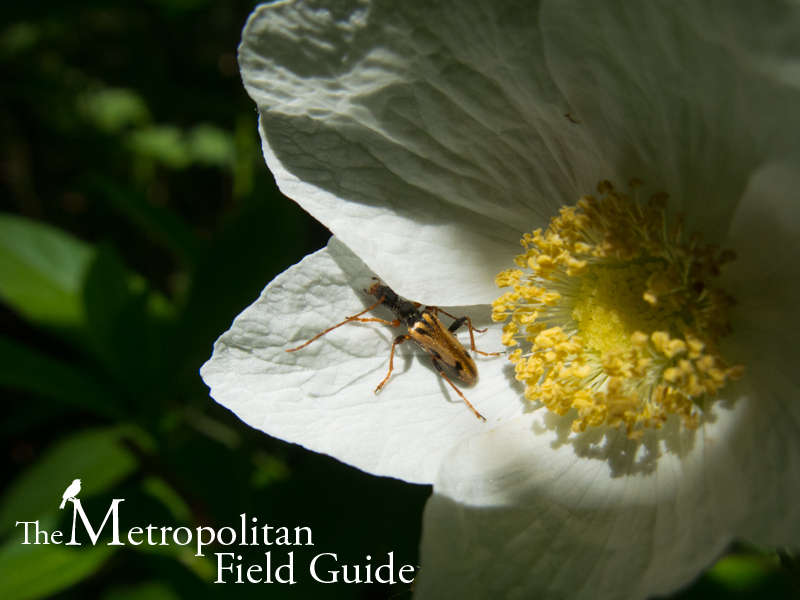This post was originally published on Native Plants & Wildlife Gardens.
Propagation has been on my mind lately. We recently moved into a house with a very bare yard and although I brought all of my plants from our apartment balcony, they hardly make a dent in the yard. I recently visited the local native plant sale and despite spending a hundred dollars, the plants are also not going to make much of an impact. I recently wrote about methods for collecting native plants, which is a great way to acquire hard to find plants, but propagating from your own collection (or friends, family and neighbors) is another easy way to get yourself some more plants.
As my thoughts turned to propagation in my yard, I pulled out my old general propagation books and bought a new one and found some good resources online. While many plants are very specific as to their needs, there are some basics which can help you get started. It’s easier than you think!
Seeds
According to Propagation of Pacific Northwest Native Plants, propagation by seeds is the best choice if possible because ‘it is easier to capture and preserve genetic variation’. Growing something yourself from seed is also very rewarding as I wrote about in ‘The Thrill of Seeds‘.
Seeds vary widely in their germination requirements, some need nothing more than to be put in soil as soon as they are collected while others require damage, baths, refrigeration and other hoops for you to jump through. Collect your seeds from the same region you’ll be growing them and store them in paper bags, never plastic. There are several techniques to cleaning seeds such as simply using water or using a more complicated screen and air contraption. Seeds with a fruit cover will need to have the pulp removed from the seed.
Storage also requires some research because the requirements vary widely. Some are easily damaged by high temperatures or exposure to sunlight. On the other hand, some are damaged by moisture or freezing temperatures. Time and rough handling can also negatively impact the seeds in your care.
It’s best to do research on the specific species or family of plants you want to propagate by seed. Some require a hot water treatment to be brought out of dormancy, some require scarification while others require techniques to overcome a double dormancy. See the WSU Master Gardener page for more information about these techniques and more details about extracting and storing seeds.
Cuttings
Compared to seeds, cuttings are a piece of cake, woody plants can easily be cut and started. Hardwood cuttings are taken from growth at least a year old while semihardwood cuttings are from the actively growing branches. Softwood cuttings are from the brand new, soft shoots. Hardwood cuttings are taken in the fall or winter while semihardwood cuttings are taking during the growing season. If the plant is deciduous, take the cuttings after the leaves have fallen off. If it’s evergreen, take them during the winter. A general guideline is to select shoots that are at least the thickness of a pencil, and closer to the middle of the plant or the ground.
You can store them in a plastic bag, or bundled and covered with damp sawdust or bark, away from sunlight for up to a week. Cut the branch no shorter than 3-4 leaf nodes long and a trick to remember the tops from the bottoms is to cut the bottom of the branch (the end closest to the roots) at an angle, while the top is cut straight across. Many species do not require a rooting hormone, but a few do and some may do much better with it. You can make your own rooting hormone by brewing a tea from willow cuttings.
The plants can then be placed in one gallon containers, or directly into the ground leaving 1-2 leaf nodes above the soil level. In the Pacific Northwest, the plants can then be simply left outside all winter long. If in containers, place them along a wall to help protect them from direct sun, wind and freezing temperatures. Evergreen cuttings require a little more effort and need to be covered in plastic and misted daily.
Some of the Pacific Northwest native plants which do well with cuttings are Mock Orange, Indian Plum, Snowberry, Western Red Cedar, Thimbleberry, Willows and Red-flowering Currant.
Live stakes are essentially the same thing as cuttings except they’re placed directly in the soil without the aid of rooting hormone. This is done from late fall to early spring and only in places with moist soil. Some Pacific Northwest native plants which do well with live stakes are Nootka Rose, Salmonberry, Red Osier Dogwood, Pacific Ninebark, Twinberry and Elderberry.

Nootka Rose, easily started with live stakes
Other Methods
Root and rhizome cuttings are pieces of root or rhizome taken from an established plant which will sprout a brand new plant when planted.
Layering is simply taking a branch from a plant, bending it down and burying it under soil until a new plant is established and then cutting it free.
Plant Division is digging up a plant and basically cutting it in half and replanting both halves.
Suckers spring up around the base of many plants and can simply be dug up and replanted.
Resources::
Propagation of Pacific Northwest Native Plants
Native Plant Propagation: Hardwood Cuttings (PDF)
The Reference Manual of Woody Plant Propagation: From Seed to Tissue Culture






